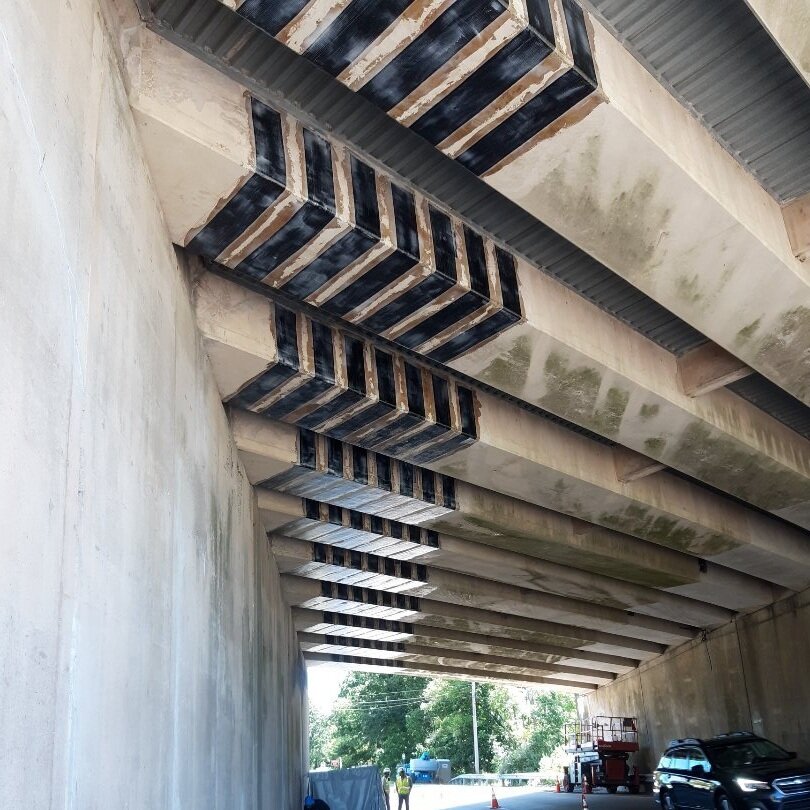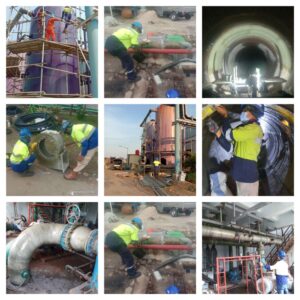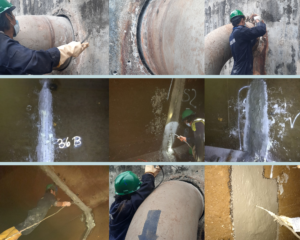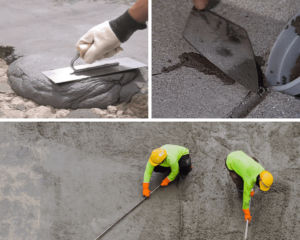Welcome to PT. Artha Guna Lestari

FRP Reinforcing
FRP composite materials are comprised of high strength continuous fibers, such as glass, carbon, or steel wires, embedded in a polymer matrix. The fibers provide the main reinforcing elements while the polymer matrix (epoxy resins) acts as a binder, protects the fibers, and transfers loads to and between the fibers. FRP composites can be manufactured on site using the wet lay-up process in which a dry fabric, made of carbon or glass, is impregnated with epoxy and bonded to prepared concrete substrate. Once cured, the FRP becomes an integral part of the structural element, acting as an externally bonded reinforcing system. FRP composites can also be prefabricated in a manufacturing facility in which the material is pultruded to create different shapes that can be used for strengthening applications, such as rods, bars and plates.
FRP wrap systems can be used on a variety of structures and in a variety of situations. FRP can be used on beams, joists, columns, decks, tunnels, tanks, pipes, silos, and much more.
There are many reasons why people opt to use FRP systems in place of traditional reinforcement systems. FRP systems can be offer reduced labor costs, less downtime during installation, and an overall more cost effective option than traditional methods.



